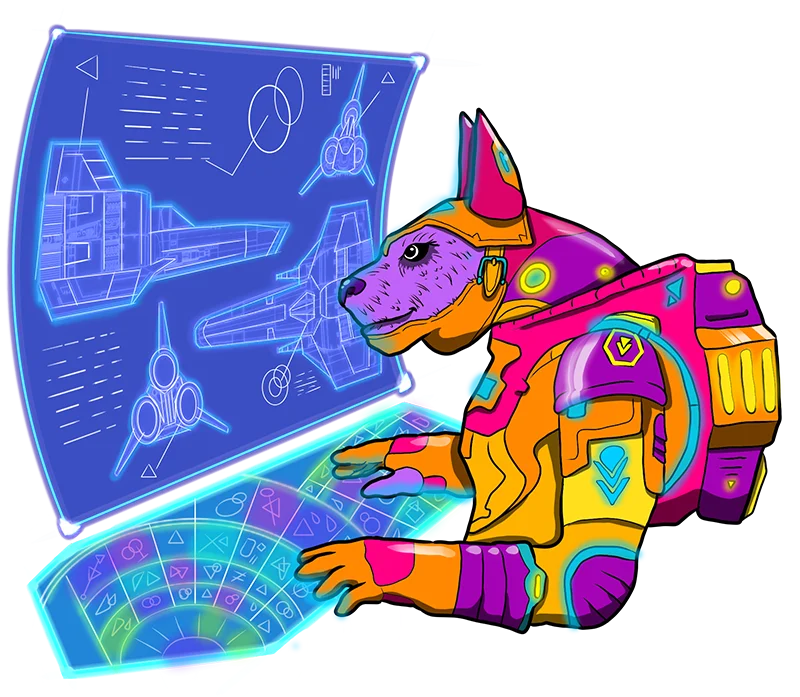Lately, integrating new tools and AI solutions into translation workflows feels less like an option and more like a necessity if you want to stay ahead or even just stay afloat. Many language service buyers are moving to providers who leverage cutting-edge technologies, either because they are following the trend or attempting to meet the demands of fierce finance teams who put pressure on budgets. As an LSP, knowing how to implement the right technology at the right time can help you keep and attract customers, but how do you cut through the noise and make tech work for you, not against you?
I hope these recommendations, based on our experience, can bring some clarity to you and your teams.
Choosing the right tools
Selecting technology should be a strategic decision, not just a response to the latest trend.

- Start by identifying your challenges or objectives: Are you looking to improve team collaboration, streamline operations, enhance efficiency, or reduce costs? Perhaps your clients are demanding an updated workflow that incorporates new technology. By clearly understanding your needs, or your client’s, you can select tools that address those areas directly. Evaluate various options, considering functionality, scalability, and integration capabilities. Your goal is to find tools that not only fit your current needs but also adapt to future growth and challenges.
- Accept that you might not know: Hiring consultants can save you so much time, effort, and money. Have you dedicated hours to finding a solution to your tech problems only to end up checking with experts? Don’t get trapped in that loop. Checking with the right person right away is sometimes the best decision and investment you can make.
- Test before you press play: Once you buy or develop a brilliant new tool, or identify how to automate your processes, you want to implement the improvement right away! Right? Of course, we all get excited about new toys, but please, take a moment to process the thrill and, for the love of Code, don’t skip the testing phase. Don’t settle for demo videos and sales pitches. Where possible, use trial versions or pilot User Acceptance Testing (UAT) programs to test how the technology performs in your real-world environment. This will help you verify that your new tool integrates seamlessly with your existing systems without interrupting your regular operations. You can thank me later. 😉
Navigating AI and Emerging Tech Trends
And what about AI? You’ve probably heard all the advice—the pros and cons—about implementing AI. As a non-expert, here are my two cents:
- Customization: Generic AI solutions may not address your specific needs. Invest in customizing AI tools to fit your unique context. But also ask yourself, is it worth it? Beware of creating a “solution” to a problem that doesn’t even exist.
- Continuous monitoring and adjustment: Monitor the performance of your AI systems and be ready to adjust. This ongoing evaluation ensures that the system continues to deliver value and adapts to evolving needs.

- Commitment to continuous learning: Invest in ongoing professional development to keep your team up to date on the latest tech advancements, and not only those related to AI. This knowledge will help you and your team make informed decisions during this pivoting time.
- Ethical considerations: Implementing AI raises important ethical questions about data privacy, decision-making transparency, and bias. Address these concerns proactively by establishing clear policies and safeguards. Ensure your systems are designed and used ethically. It’s also crucial to keep humans at the core of your AI strategy. While AI can boost efficiency, it can also threaten budgets and, by extension, jobs. Focus on using AI to enhance human capabilities rather than replace them. Provide opportunities for reskilling and upskilling, ensuring your team can thrive alongside innovations.
Crafting a Tailor-Made Knowledge Management Strategy
I know I’ve mentioned this before, but I can’t stress enough how crucial it is to have a comprehensive knowledge management strategy. From our experience, this is one of the most critical phases in adopting new technology. Simply sharing tutorial links provided by the vendor is often insufficient.
Document all processes, configurations, and setups meticulously. Relying on human memory alone creates bottlenecks and risks losing crucial information. Ensure that all knowledge is recorded in accessible formats, such as tutorials, videos, and comprehensive guides.

Encourage a culture of continuous learning by regularly updating training materials and providing opportunities for ongoing education. This helps your team stay current with new features, updates, and best practices, ensuring that the technology remains a valuable asset rather than a temporary fix.
The Road Ahead
Innovation and technology are powerful allies in the quest for efficiency and excellence. By choosing the right tools, implementing AI solutions thoughtfully, and establishing a robust knowledge management strategy, you set the stage for a smooth transition and long-term success. Remember, it’s not just about integrating new technology but about creating an environment where people can thrive and drive meaningful improvements.
About the author:

Angie Tapia is a professional in translation, localization, project management and language services. She holds a Bachelor of Arts in Translation and Interpreting and a Master’s in Administration and Project Management. Her career includes a pivotal role as the Head of Language Services at the Lima 2019 Pan American and Parapan American Games, where she led a team of 50 language services professionals and over 300 volunteers, providing over five million translated words and a thousand hours of interpreting. Angie’s work extends to academia, where she has served as a university professor since 2015. She also brought her passion for innovation and localization to Terra Localizations, where she served as Customer Success Manager, helping shape solutions for the video game industry.



